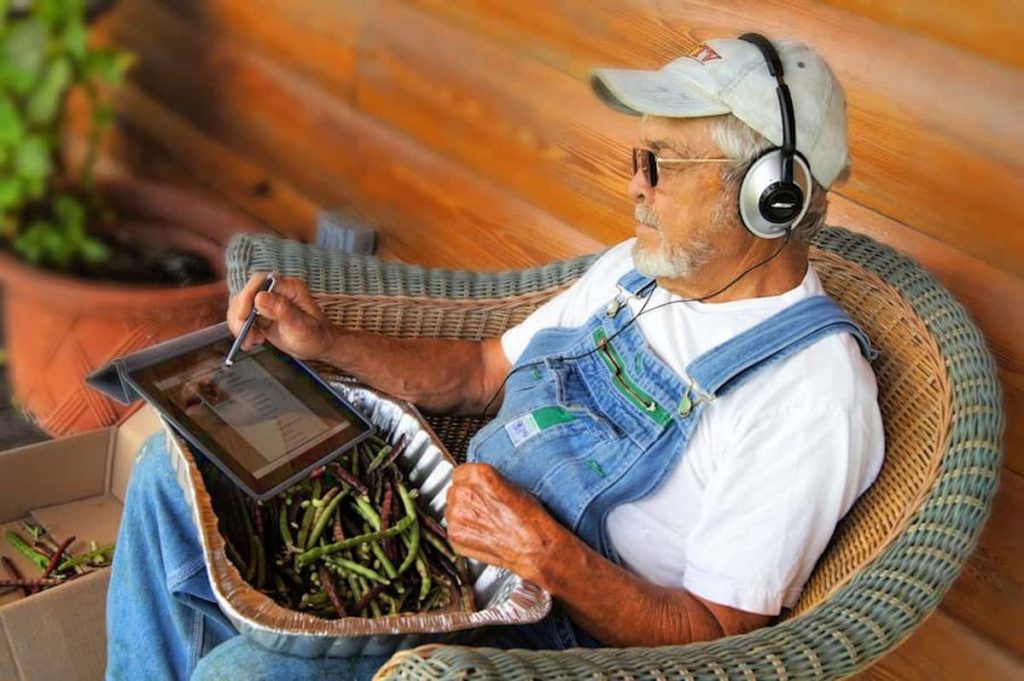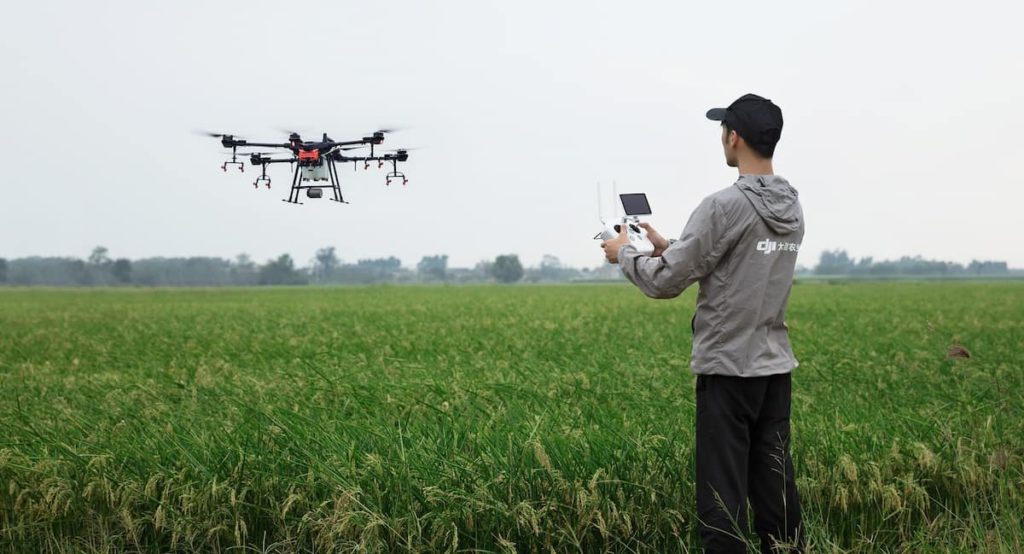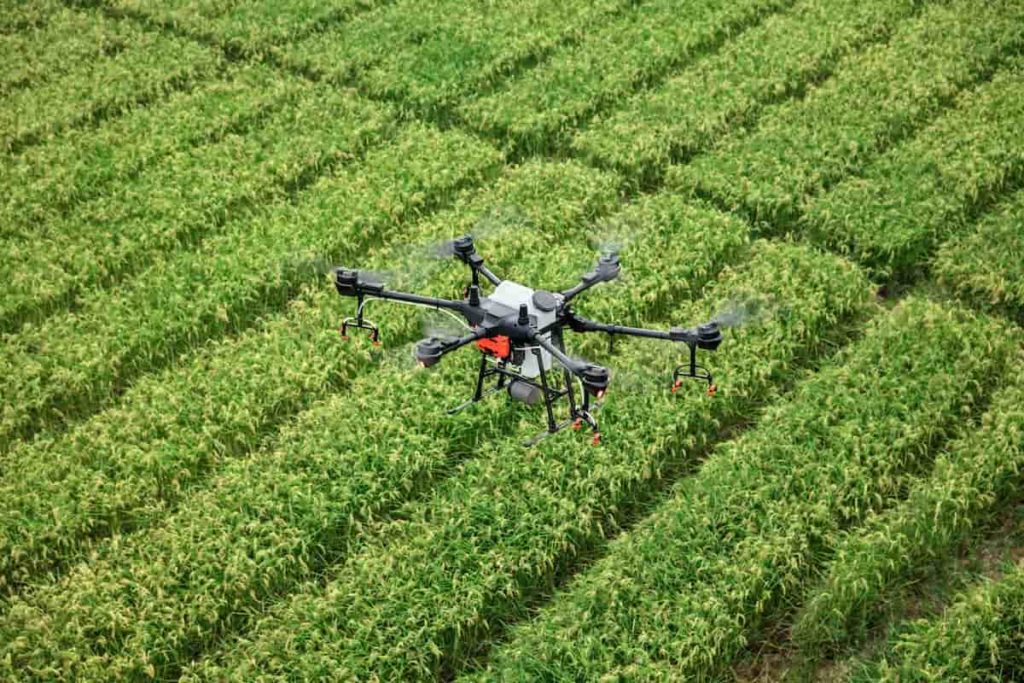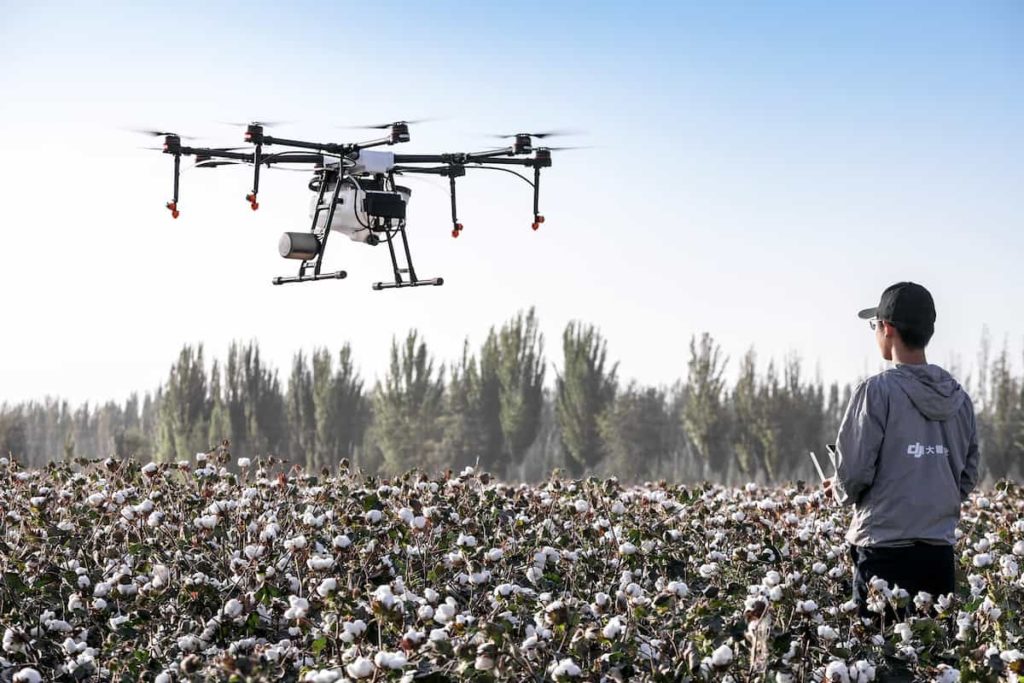Industrial agriculture demands massive efforts in planning, tracking, shipment, coordination, and more. Agricultural technologies such as the Internet of Things (IoT) and artificial intelligence (AI) are already helping to address these challenges at the cutting edge of a growing field.

The IoT future will be largely enabled by implementing 5G technologies that will allow farmers to monitor water and electricity usage, livestock movements, maintenance alerts, market prices, and a wide range of machinery across their property will provide real-time data on everything will help regional businesses to compete locally and internationally, promote investment and encourage more technology adoption. In addition, 5G will play an important role in smart farming and precision agriculture, which promises to be the key to optimizing resources and increasing yields.
Role of 5G technology in agriculture
Benefits of 5G technology in agriculture
- 5G will deliver real-time data in many ways. Using agricultural practices, these new capabilities to monitor, track and automate systems at lightning-fast speeds will give birth to smart farming. 5G will revolutionize the agriculture sector by accurately understanding the agricultural sector, ensuring optimal cost-effectiveness, better utilization of crop and livestock resources, and the best value for end consumers.
- Smart farming could be a game changer as we face a confluence of resources and production, leveraging a combination of 5G, edge computing, and artificial intelligence (AI) that allows high-speed connectivity with low latency. Examples of smart farming technology taking advantage of 5G include cellular-connected drones and robots equipped with cameras, which quickly inspect large tracts of land to monitor crop fields and livestock closely.
- You can maintain high crop quality and growth potential standards through automation.
- 5G-enabled precision farming will greatly assist farmers in tackling the challenges posed by climate change. Current technologies enable farmers to collect data on weather conditions and crop health from IoT-enabled remote sensors.
- These technologies can also provide actionable insights into managing these diseases and enable the automation and precision of pesticide application. For example, 5G can make it faster, more efficient, and more accurate.
5G technology improving the accuracy and efficiency of remote sensing
5G will also greatly impact remote sensing, in which agricultural machines and drones assess the condition of fields and crops and use the information gathered from them. High-resolution image data usually takes up a large amount of space, but with 5G technology, this data can be received at high speeds. The system will analyze wide-range field images in a short time, rapidly predict crop growth, improve fertilizer distribution, and focus on areas of poor growth, among other services. Additionally, by rapidly gathering large numbers of high-resolution images for AI learning, the system can improve AI accuracy and processing speed in a short period. As AI develops, it can suggest the next step needed in the field, enabling precision agriculture that is more than just data.
In case you missed it: Top 15 Agriculture Software Solutions Providers in India: For Better Farm Management and Crop Yield

How does 5G improves farming?
With 5G, a wide range of improved technologies will open up for farmers. For example, a large network of data-collecting sensors can monitor field conditions more accurately. Autonomous drones can scan crops using AI to identify weeds and apply pesticides with precision. More importantly, farmers can better understand their water use and implement adjustments to irrigation systems based on accurate data.
To improve the effectiveness of farming practices, innovation in the farming sector will be required to meet the global food demand for a growing population. 5G-enabled solutions will help facilitate the digital transformation of agriculture, and while the industry has been slow to adopt new technologies, the prospects for smarter farming practices are understandably exciting.
5G technology holds great promise for centralized data collection in large-scale farming operations. For example, a large corporate farm could build a private 5G network to collect data from micro-monitoring crop management systems. These systems include a density of soil moisture sensors, potentially hundreds of times greater than currently available technologies. In addition, this network can enable a more efficient real-time monitoring system with triggers for throttling irrigation and other crop support systems.
As 5G technology enables data collection, large industrial farms can better incorporate predictive analytics. By considering past and present data on conditions (e.g., soil moisture and pesticide use), analytics software creates models and forecasts to help farmers make decisions. As 5G enables more real-time data, analytics will become more accurate, maximizing farm productivity and efficiency.
How will 5G affect the future of farming?
For smart farming to succeed, 5G-connected farm machinery is a must. Increasing computing power and data collection are the driving forces behind using artificial intelligence. But it is essential to get the data where it needs to be analyzed. Using 5G on farm machinery and sensors will increase the amount of data available so that AI can do what it is good at, such as spotting patterns that allow for improved production, for example, early disease detection.
Water conservation is very important in dry, arid regions. Soil probes are buried about four feet below an irrigation line, collecting and sending back data about the soil so the farmer can track soil moisture, water patterns, and salinity. The farmer analyzes the readings and can then precisely manage irrigation cycles and soil nutrition. It can reduce water consumption by 40% with the help of 5G.
In case you missed it: Seaweed Extract Uses in Agriculture: A Step-By-Step Guide for Beginners

Irrigation and water management
Climate change has affected water availability and rainfall predictability. Advanced technology can help industrial farmers overcome water scarcity and extend dry spells. Advanced machine algorithms can process this data and distribute water where needed. The speed and throughput of 5G facilitate the transmission of these large data sets.
Smart irrigation is the most important aspect of irrigation farming, as crops depend on irrigation for their water requirements. Besides the quantity of water, timing also plays an important role in a healthy crop. With 5G technology, farmers can do more efficient irrigation. One can use soil probes that are buried under the soil and can be connected through 5G connectivity. These devices can capture data such as moisture content, soil patterns, and salinity, giving the farmer insight into the health of crops.
AI-powered machines
Smart farming also involves enhancing the capabilities of traditional farming machines. For example, farmers can connect their various machines through 5G and get real-time data about their positioning and work. Artificial intelligence also allows these machines to make appropriate decisions when needed without human intervention.
Weeding
Machine learning algorithms can be trained on various images to recognize different weeds. Edge computing devices in the field can then compare what they see on the ground with what they know and remove weeds. (A similar method can be used for harvesting crops or picking fruits). Selectively addressing weeds requires data-driven analysis at the edge, a process that is aided by the higher bandwidth and lower latency of 5G.
Livestock management
IoT collars can continuously monitor livestock and alert farmers when something doesn’t seem right. Robotic milkers free farmers from backbreaking early-morning labor, and machine-learning algorithms can help ensure cows are milked only when they’re ready.
Robots can do the hard work, taking data from IoT transponders and providing alerts to farmers when protocol deviates—like if a cow doesn’t show up for milking on a certain day. These robots’ methods of data are at the edge and deliver comprehensive analytics to owners, but they’ll need low-latency, high-volume networks— the kind 5G can provide.
Digital farming
Data acquisition using 5G-enabled drones, data analysis (AI/ML algorithms, data analytics, and real-time data processing in the cloud), advisory (real-time on-farm operations based on data analysis optimization), and in-form activation. (Enabling 5G-enabled machinery and robotics in the farm on a consultative basis) are part of digital farming.
Examples of 5G technologies in agriculture
Although many farmers already use sensors to collect data, devices in rural areas are still mostly connected to public 4G or Wi-Fi. Since many rural farmers don’t have the luxury of stable 4G and Wi-Fi doesn’t cover desirable areas, private 5G networks are an essential upgrade.
Smart farming
Smart farming uses sensors that monitor soil, water, humidity, light, and temperature to properly manage fields and use available resources. By applying modern technology in agriculture, farmers can improve their data collection and communication and maximize production. 5G in agriculture can significantly speed up the process and bring more accurate and timely results.
In case you missed it: How Start-ups are Making Agriculture More Sustainable

Predictive analytics
Data collection and analysis help farmers make valuable predictions. Smart farming systems using 5G will help you identify patterns and make data-driven decisions.
Autonomous vehicles in farming
Autonomous vehicle technology can provide significant cost reductions while increasing the efficiency of farming operations. Driverless trucks in agriculture can be equipped with temperature sensors to alert farmers to rapid changes and cameras to record crop conditions. 5G technology will increase the quality of videos and sensor data accuracy and communicate the collected information much faster than 4G. It is worth noting that a private 5G network will also guarantee stability, unlike the public networks of previous generations.
Weather stations
Farmers install weather stations that continuously measure soil moisture and texture, temperature, wind speed, and UV light to achieve high accuracy about weather conditions. Getting up-to-date weather information in real-time can help farmers react quickly and avoid crop damage. The benefits of 5G in agriculture include high-speed connections and instant report generation with up-to-date information.
A 5G-enabled weather station can help farmers optimize their labor, water use, and crop health, preventing damage and disease. Weather conditions such as rainfall, temperature, wind speed and direction, wind pressure, and humidity can all be measured in real-time across multiple and large features through 5G, helping farmers achieve better crop yields. In addition, more data-dense observations can be provided to help.
Key features of 5G technology in agriculture
5G has three significant features that make it different from past communication systems. The first is its extremely high speed. The second is its extremely low latency. Users can remotely control the robot in real-time without experiencing any delay or time lag. The third is its multiple simultaneous connections. It will allow smartphones, PCs, and other devices around us to connect to the Internet.
Major areas of development will be remote monitoring and control of farm machinery, remote sensing, and compatibility with dry field crops.
Applications of 5G technology in agriculture
The use of agriculture-based applications can be very effective and efficient for farmers. For example, 5G-enabled applications on smartphones can provide farmers with real-time data on weather conditions, rainfall, and other critical data related to the sector. The applications will also inform the farmers about the agricultural market, and they can easily know the current prices of seeds, pesticides, and even the market value of their produce.
In case you missed it: Ginger Farming Business Plan: A Guide to Production and Cultivation for Beginners

Drones
Remote sensing by drones bridges the gaps in both satellite and ground remote sensing. 5G-capable drones, equipped with multi-spectral sensors, can be used to analyze the nutritional status of crops through digital soil mapping. It is integrated with weather and other agricultural information to accurately apply the optimum amount of fertilizer to a given location.
Drones detect pests, diseases, and weeds and apply pesticides to target areas after analyzing the data through AI algorithms. Farmers can use drones to monitor crops and livestock and spray water and agrochemicals. They allow limited and precise spraying without excessive use of chemicals and crop damage.
In addition, it is cheaper than driving a tractor in the fields and doing all the work manually. One advantage of a private 5G network for agriculture is its high speed, which provides high-quality video data. In addition, drones are equipped with AI-powered cameras to analyze crops and assess their health. By evaluating plant color and texture, drones generate real-time reports and allow farmers to make quick decisions about harvesting.
Precision farming
A specific part of the land needs treatment, and we treat the entire land causing more damage due to the unavailability of data 5G will help give accurate information. Precision agriculture is a strategy to increase productivity. It increases accuracy, precision, and throughput at all levels with reduced cost and labor through disruptive innovations such as automation, remote sensing, data analytics, and 5G.
The goals are profitability, environmental protection, and sustainability. 5G applications in agriculture use 5G-enabled modular IoT (Internet of Things) gateways to monitor climate, agricultural vehicles, livestock, soil moisture, plant health, pest control, and water management. Can monitor supply control etc.
AI-enhanced machinery
Proper implementation of precision agriculture involves AI-enabled farm machinery. Through AI-powered mobile applications, farmers get instant updates on various environmental threats and crop-destroying diseases. At the same time, continuous monitoring of farms using AI-enhanced machinery can help farmers identify risks early on. However, artificial intelligence needs adequate data to work effectively. 5G will fill the gap in data availability that is still evident by accelerating large amounts of data transfer, which will help AI perform efficiently.
Accurate harvest estimation
Drones use high-quality and AI-powered cameras to separate healthy crops from bad crops and weeds. They facilitate this by identifying differences in leaf color and texture in plants. Accordingly, these devices isolate plants and report the data to farmers, who then take corrective action. With 5G, these devices can report data about potential weeds, damaged crops, and their location directly to follow-up machinery in real-time. As a result, growers can harvest faster and more efficiently with automated crop detection and weeding, saving time and cost.
Animal tracking
Monitoring livestock health, fertility, and feed intake are critical to lean management. To date, most animal monitoring devices do not have 5G sensors but Wi-Fi or Bluetooth, making the signal less stable and reliable. A key benefit of 5G in farming is the strong signal in smart 5G collars and ear tags that provide accurate cattle location and health monitoring.
Livestock management
5G technology can also revolutionize livestock farming, where farmers can monitor the health of their livestock and track their activities through geolocation. This technology will give farmers essential data about their livestock, such as feed, fertility, and other activities. It will lead to better management and planning of livestock farming and will significantly help farmers involved in this sector.
In case you missed it: Seaweed Extract Uses in Agriculture: A Step-By-Step Guide for Beginners

VRT (Variable Rate Application Technology)
It allows farmers to apply pesticides, fertilizer, water, and seed at different rates across the field. This technology, 5G-enabled sensors, measures ground or crop properties in real-time. The control system then calculates the amount of input that is required. The benefits of using this technology are increasing productivity, protecting the environment, and reducing costs.
5G farm machinery
Precision agriculture needs 5G-connected farm machinery to take off. 5G will massively increase the amount of data available on farm machinery and sensors, meaning AI can now function properly. Farms are typically run with a mix of experience and specialized knowledge, and centralized AI is already seeing patterns that allow production to be optimized, for example, by giving early warnings of disease in greenhouses.
Insect tracking
5G pest tracking can quickly send back data from fixed in-field sensors. These can measure pest numbers, disease pressure, and soil conditions in real time. 5G-enabled geolocation can also be used to precisely locate machines on a farm.
Conclusion
5G can help support existing efforts and enable new possibilities. 5G will revolutionize the agricultural sector through better understanding, cost-effectiveness, and utilization of crop and livestock resources. Using 5G, farmers can monitor field conditions and be notified when crops need watering, pesticides, or fertilizers. Other uses for 5G in agriculture are tracking livestock, piloting agricultural drones, and guiding self-driving tractors.
- Economical Aquaculture: A Guide to Low-Budget Fish Farming
- 15 Common Planting Errors That Can Doom Your Fruit Trees
- How to Make Houseplants Bushy: Effective Tips and Ideas
- Innovative Strategies for Boosting Coconut Pollination and Yield
- Pollination Strategies for Maximum Pumpkin Yield
- The Complete Guide to Chicken Fattening: Strategies for Maximum Growth
- Natural Solutions for Tulip Problems: 100% Effective Remedies for Leaf and Bulb-Related Issues
- Revolutionizing Citrus Preservation: Towards a Healthier, Greener Future
- Natural Solutions for Peony Leaf and Flower Problems: 100% Effective Remedies
- Maximizing Profits with Avocado Contract Farming in India: A Comprehensive Guide
- Natural Solutions for Hydrangea Problems: 100% Effective Remedies for Leaf and Flowers
- The Ultimate Guide to Choosing the Perfect Foliage Friend: Bringing Life Indoors
- From Sunlight to Sustainability: 15 Ways to Use Solar Technology in Agriculture
- The Ultimate Guide to Dong Tao Chicken: Exploring from History to Raising
- The Eco-Friendly Makeover: How to Convert Your Unused Swimming Pool into a Fish Pond
- Mastering the Art of Delaware Chicken Farming: Essentials for Healthy Backyard Flocks
- 20 Best Homemade Fertilizers for Money Plant: DIY Recipes and Application Methods
- How to Craft a Comprehensive Free-Range Chicken Farming Business Plan
- Brighten Your Flock: Raising Easter Egger Chickens for Beauty and Bounty
- How to Optimize Your Poultry Egg Farm Business Plan with These Strategies
- Subsidy for Spirulina Cultivation: How Indian Government Schemes Encouraging Spirulina Farmers
- Ultimate Guide to Raising Dominique Chickens: Breeding, Feeding, Egg-Production, and Care
- Mastering the Art of Raising Jersey Giant Chickens: Care, Feeding, and More
- Ultimate Guide to Raising Legbar Chickens: Breeding, Farming Practices, Diet, Egg-Production
- How to Raise Welsummer Chickens: A Comprehensive Guide for Beginners
- How to Protect Indoor Plants in Winter: A Comprehensive Guide
- Ultimate Guide to Grow Bag Gardening: Tips, Tricks, and Planting Ideas for Urban Gardeners
- Guide to Lotus Cultivation: How to Propagate, Plant, Grow, Care, Cost, and Profit
- Agriculture Drone Subsidy Scheme: Government Kisan Subsidy, License, and How to Apply Online
- Ultimate Guide to Raising Araucana Chickens: Breed Profile, Farming Economics, Diet, and Care
- Bringing Hydroponics to Classroom: Importance, Benefits of Learning for School Students
- Ultimate Guide to Raising Polish Chickens: Breed Profile, Farming Economics, Diet, and Care
- Ultimate Guide to Raising Australorp Chickens: Profile, Farming Economics, Egg Production, Diet, and Care
- Silkie Chicken Farming: Raising Practices, Varieties, Egg Production, Diet, and Care
- Sussex Chicken Farming: Raising Practices, Varieties, Egg Production, Diet and Care
- Homemade Feed Formulations for Livestock: Discover Cost-effective Starter to Finisher Feed Recipes
thanks for info
Good information. Thanks